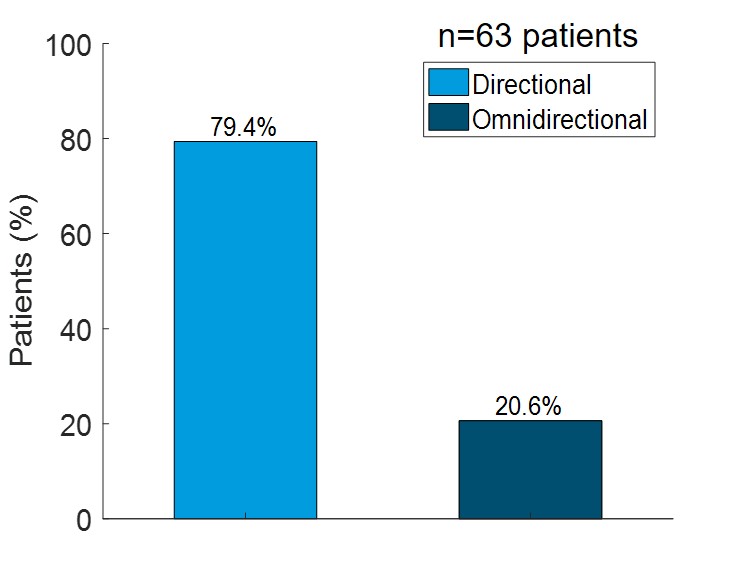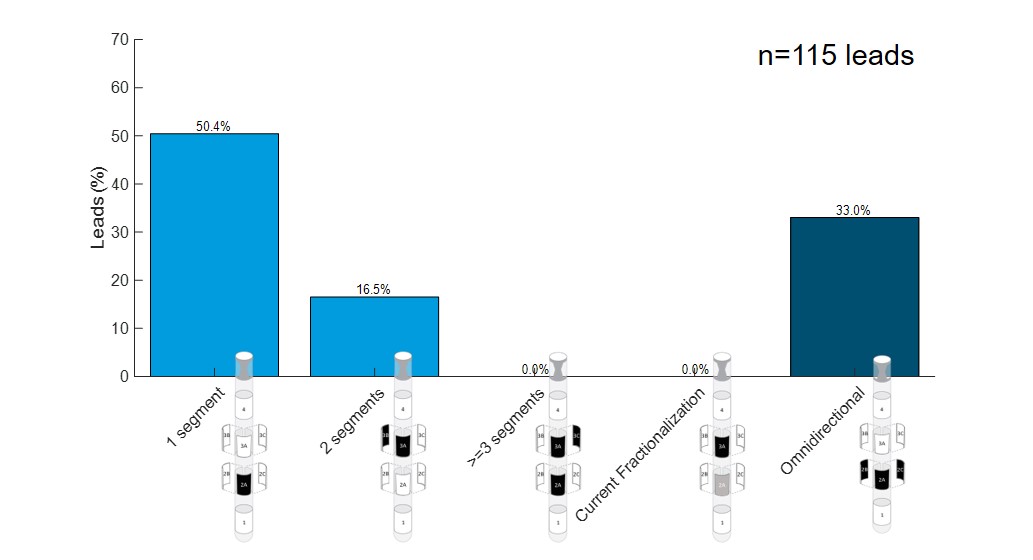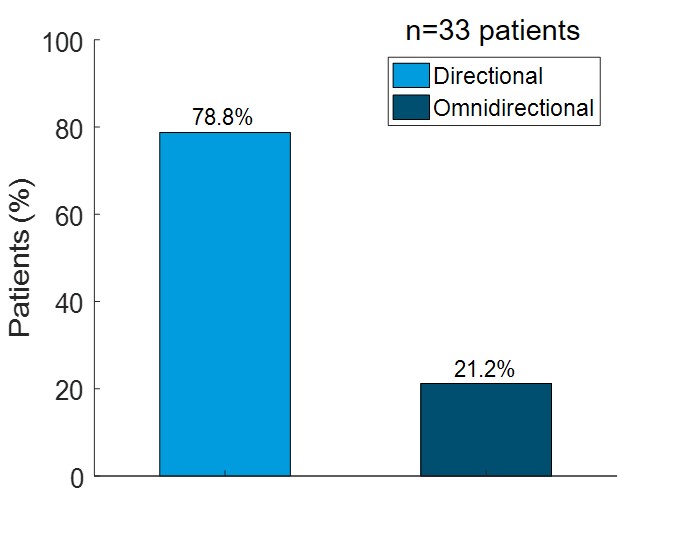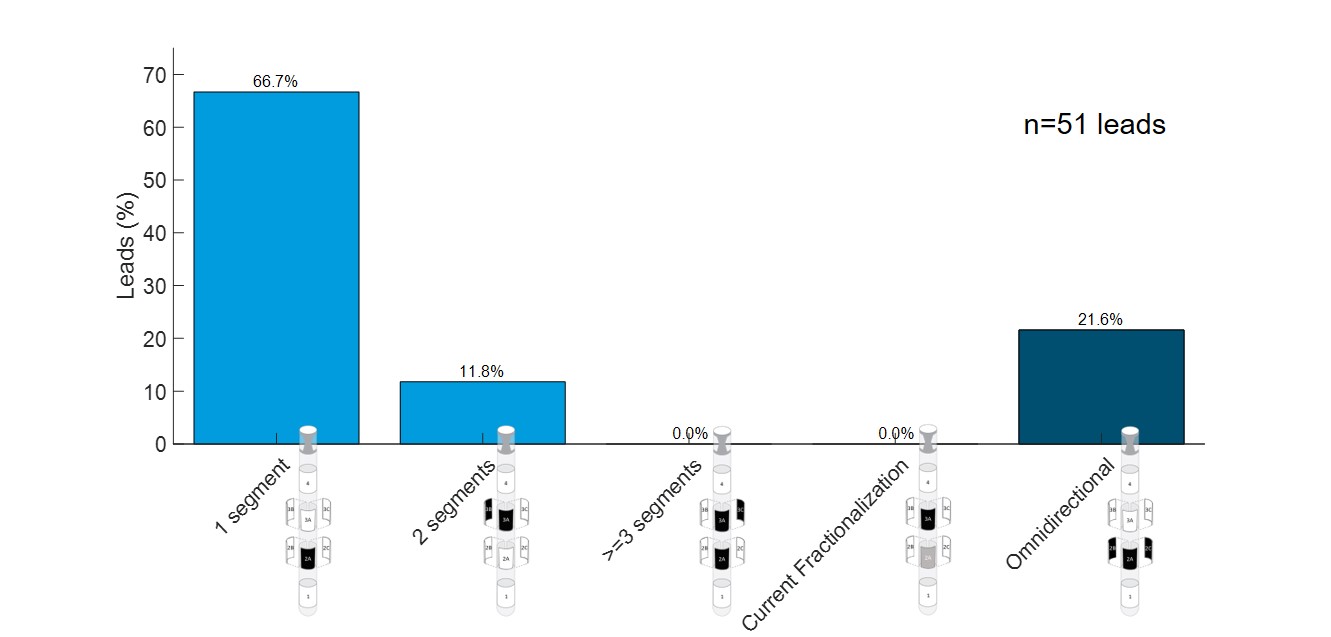Category: Surgical Therapy: Parkinson's Disease
Objective: Retrospective assessment of directionality in PD (STN-DBS) and ET (Vim-DBS) patients programmed in routine clinical care at the Cleveland Clinic.
Background: Clinical evidence for directional DBS reported in academic studies has been limited to small cohorts (n<=11) while the largest study (n=234 patients) was an industry sponsored study (PROGRESS). There is need for real-world clinical evidence involving larger cohorts.
Method: In 63 PD patients (115 leads) and 33 ET patients (51 leads) on stable settings for at least 3 months, we retrospectively reviewed programming settings, TW, TCS and TEED. Uptake in directionality was quantified. Single segment activation (SSA) and omnidirectional stimulation were compared. TCS and TEED were compared for monopolar review done with and without Informity software. In the PD cohort, MDS-UPDRS-III scores were lower by 52% on average from Off to On stimulation (p<0.0001).
Results: 79% of STN patients (67% of leads)[figure1] and 79% of Vim patients (79% of leads)[figure3] were on directional stimulation. 50% of STN leads[figure2] and 67% of Vim leads[figure4] were on SSA. 81% and 94% of STN- and Vim-DBS subjects, respectively, were on active directional settings at 12 months and beyond their initial programming. STN leads had 108% greater TW%, 39% lower TCS and 29% lower TEED with SSA compared to omnidirectional stimulation. Vim leads had 82% greater TW%, 49% lower TCS and 41% lower TEED with SSA compared to omnidirectional stimulation. Use of Informity during monopolar review resulted in 24% TCS reduction and 41% TEED reduction in STN leads and 14% TCS reduction and 17% TEED reduction in Vim leads. Furthermore, 38% of VIM patients were programmed on independent frequencies across hemispheres. There was no correlation (Pearson coeff= -0.03) between uptake in directionality and optimal lead placement based on MER STN length.
Conclusion: To our knowledge, this is the first large real-world dataset showing value of directionality in STN- and Vim-DBS, providing complementary evidence to the recently published PROGRESS Study. Results show substantial uptake in directionality in PD and ET patients. Directionality also resulted in increased TW and reduced TCS and TEED. Uptake in directionality is independent of optimal lead placement, suggesting clinical value in optimally placed leads.
To cite this abstract in AMA style:
B. Walter, S. Ozinga, S. Pallavaram, B. Cheeran, R. Rammo, E. Hennigs, J. Scott, K. Wilson, E. Walter, A. Machado, S. Nagel. Real-world Evidence of Directional DBS Programming in Parkinson’s disease and Essential Tremor: The Cleveland Clinic Experience [abstract]. Mov Disord. 2020; 35 (suppl 1). https://www.mdsabstracts.org/abstract/real-world-evidence-of-directional-dbs-programming-in-parkinsons-disease-and-essential-tremor-the-cleveland-clinic-experience/. Accessed October 19, 2025.« Back to MDS Virtual Congress 2020
MDS Abstracts - https://www.mdsabstracts.org/abstract/real-world-evidence-of-directional-dbs-programming-in-parkinsons-disease-and-essential-tremor-the-cleveland-clinic-experience/




